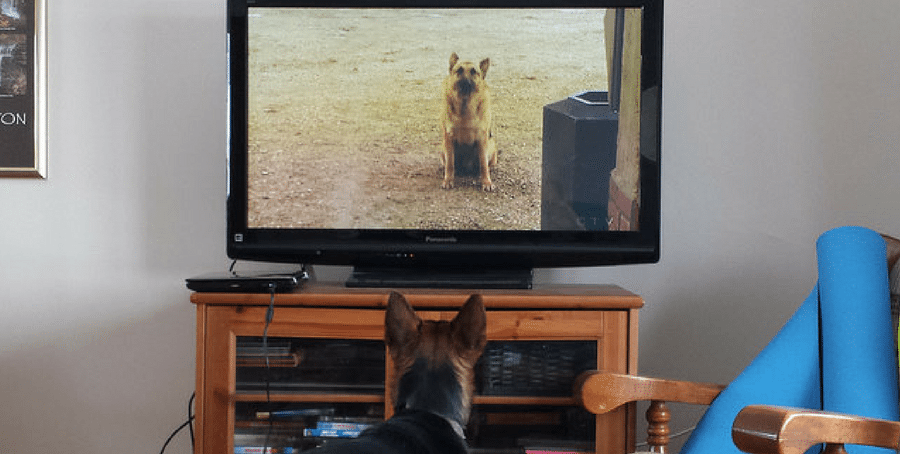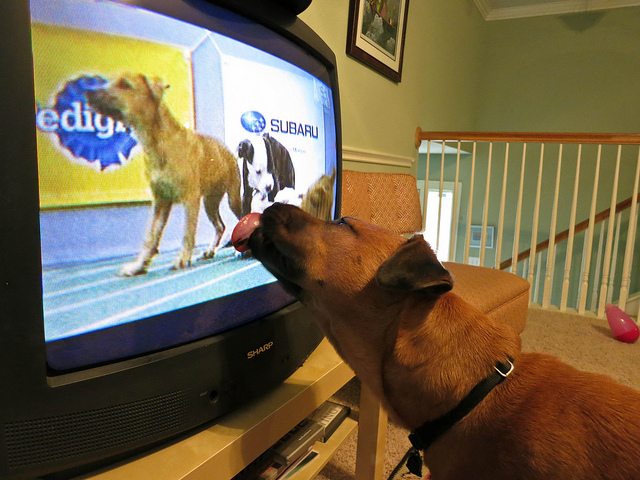Get the remote and change the channel. It's Spot's turn to choose family movie night.
Are you in the habit of flipping through TV stations to find your dog's favorite show before you leave for work? You're not alone.
For many dog people, that's the last to-do on their morning checklist. Because dogs, of course, can't be left alone without quality entertainment.
Quality is, of course, key. Not many dogs are found glued to "The Young and the Restless," but many seem to like Animal Planet.
Former London Zoo veterinarian Malcolm Welshman addressed canine TV addiction in his research, revealing some unexpected guilty pleasures.

A dog's eyes perceive movement and color differently than humans. In the times before HD television, watching the boob tube through a dog's eyes was akin to flipping through a scrapbook. Dogs require 70 images a second in order to view something as continuously in motion. Humans, on the other hand, only need up to 20. TVs were made for human eyes, not canine.
Until high-def entertainment.
Now, dogs perceive continuous motion in film. However, dogs only have two cones in their eyes—blue and yellow—limiting their color field. In contrast, humans have three cones. Combined, much like an artist's color palette, we can see a prism of rainbow. Dog vision is similar to what humans refer to as being color blind.
The TV screen also looks blurry to dogs due to lack of a fovea, a part of the eye so densely packed with cones that humans can see fine detail.
Hunting dogs that rely on eyesight over auditory cues are more likely to show an interest in the flickering television, according to Welshman's reports. These breeds include terriers and whippets. Hound dogs, on the other hand, lead by their nose, and are therefore less likely to be enthralled by motion picture.
Animal Cognition Journal published a study to see if dogs could recognize real characters from cartoon characters as well as their own breed. They concluded that dogs really do know the difference. Scientists believe canines can detect that animated movements are not as life-like as living creatures.
Many owners notice their dog barking at animals on the TV or even scooting closer. They are actively engaging their other senses in an effort to define more about the animal, much like they would at a doggy meet-and-greet. When the on-screen animal doesn't respond to the barking, the dog can infer that it's likely not the real deal—though sometimes it takes a few more attempts to learn.
If you're keeping the TV on for the pooch, scientists recommend you put it at a lower doggy eye level for optimal viewing. But note that this also makes your screen vulnerable to territory marking and attack mode, in case the on-screen character does happen to respond to your barking canine. This is especially true if you leave the TV on for the cat, because science says superior vision in felines makes television more interesting to them.
What do you think? Does your dog enjoy watching TV? Let us know in the comments below!
WATCH NOW: Special Stars of the 2017 Puppy Bowl





